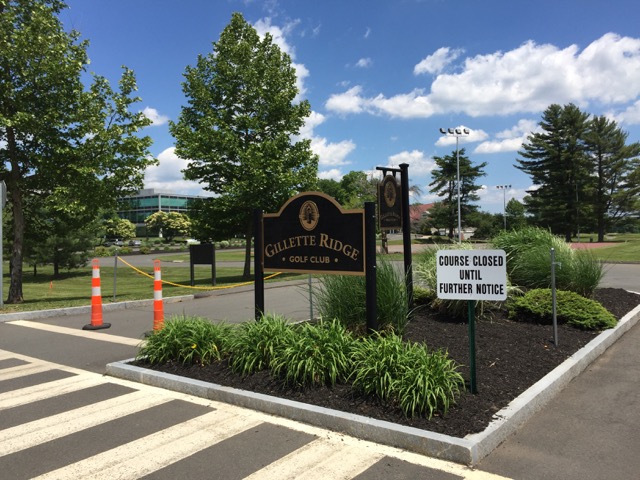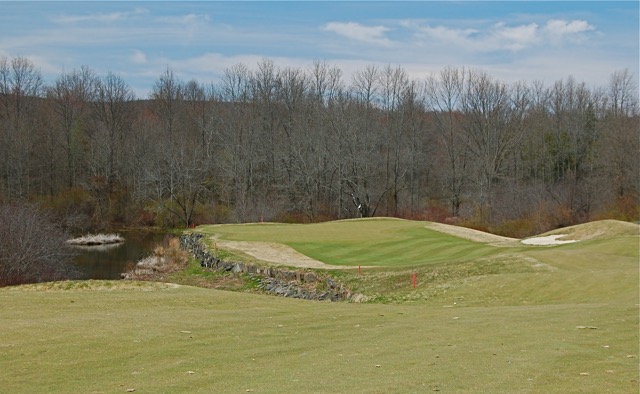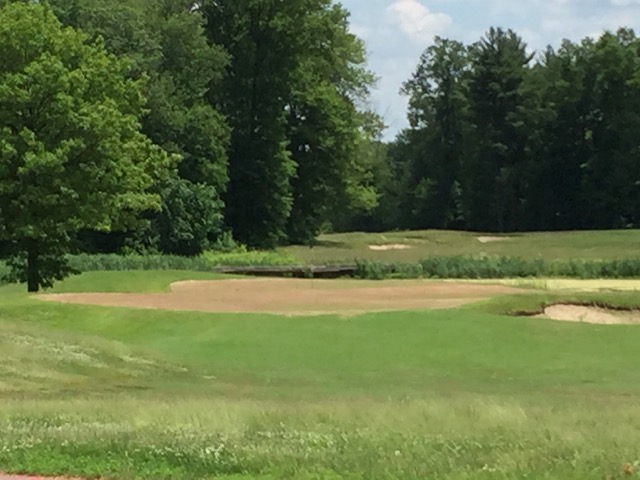The Gillette Ridge Golf Club was dogged by miscalculation and mismanagement from the moment it opened in 2004. The original owners of the Bloomfield, CT, public facility laid out in the middle of a major office park had the bright idea to task the Arnold Palmer design group with building one of the toughest layouts in the area. What they produced was a golf course that wasn't so much tough as it was unfair. The greens, at opening, were rock hard, and the combination of concrete greens and a bunch of forced carries gave the layout a quick reputation for unfriendliness, especially among women and junior golfers. No one would want to learn to play on a course that difficult. I recall following my son and his high school golf team around the course during a competition, and mid 90s was the median score for kids who typically shot in the mid 80s. Fun and the Gillette Ridge golf course were never mentioned in the same breath by anyone who played it. Gillette Ridge Golf Club in Bloomfield, CT, closed without warning a few weeks ago, although warning signs were there last September when the troubled owners filed for bankruptcy.
Gillette Ridge Golf Club in Bloomfield, CT, closed without warning a few weeks ago, although warning signs were there last September when the troubled owners filed for bankruptcy.
Those who ran the club, especially the latest owners, were also uncreative in the extreme. Thousands of office workers stroll through the grounds at lunchtime every day, and many of them stopped at the club's competently run restaurant for a meal and drink after work. Whenever I played the golf course in good weather, I noted that the restaurant was nearly filled, the patio included. With that kind of captive audience, all wage earners, you would think any marketing program could have reeled in a good number of them to play the course after work and on the weekends (virtually all of them live in the area).
The club should also have been able to count on the surrounding group of homes that were developed in concert with the opening of the club. With hundreds of residents within an easy stroll of the first tee, one wonders why they could not be engaged to form a core membership in the club. After all, we know that about half of those who live in a golf community do play the game, at least occasionally. Even after the layout was softened, many golfers found the approaches too severe, such as at the par four 4th hole, with all carry to a small green that tilted hard right to left toward a menacing pond.
Even after the layout was softened, many golfers found the approaches too severe, such as at the par four 4th hole, with all carry to a small green that tilted hard right to left toward a menacing pond.
Within a few years of opening, the owners of the club softened the golf course's severe layout somewhat, making the approaches to the greens a little easier and doing what they could to make the greens a bit more receptive. But despite a few wonderful holes –- the almost drivable par 4 10th is one of them –- and unusual landscaping touches, such as the massive sculptures beside the 17th fairway, perceptions of the course had already been cemented. Given a choice between Gillette Ridge and nearby Wintonbury Hills, the Bloomfield municipal course designed by Pete Dye and opened within a couple of years of Gillette Ridge's debut, virtually everyone I know would choose Wintonbury.
Gillette Ridge closed a few weeks ago after its owners filed for bankruptcy last September. MDM Golf, run by a former golf pro, had been kicked out of two other golf courses it manages for unpaid bills and mismanagement. At the time of the Gillette Ridge closing, MDM owed its creditors well over $6 million.
I stopped by Gillette Ridge the other day to see if there were any signs of life. One gardener with a weed whacker was attending to the lawns surrounding the parking lot. The course, from the vantage point of the clubhouse patio, was overgrown and the greens I could see appeared to be burned out. The shuttering of Gillette Ridge just as the Connecticut revenue-generating golf season began was sadly ironic for a club whose management never had its timing or organization quite right. One of the saddest sights for a golfer, a dead green, in this case #18 at Gillette Ridge.
One of the saddest sights for a golfer, a dead green, in this case #18 at Gillette Ridge.



